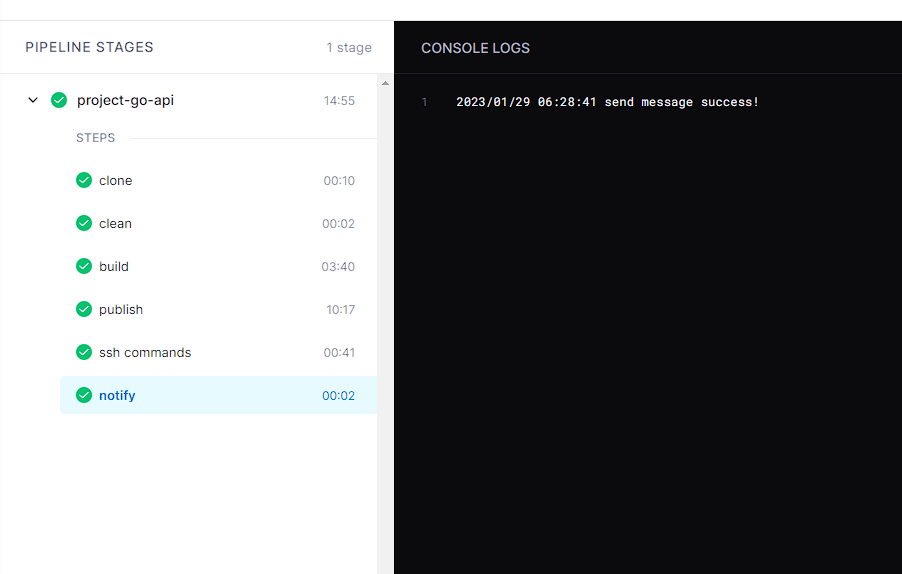基于Go的AC自动机
用于在文本中查找和提取关键词。它使用高效的算法和数据结构,可以快速匹配大量的关键词,并返回匹配结果。
git地址:https://git.echol.cn/loser/keyword-extraction
可以用于智能客服,例如根据关键词回复指定内容
keywordprocessor.go
package extractor
import (
"unicode"
"unicode/utf8"
)
type WalkFn func(start, end int) bool
type KeywordProcessor struct {
root *Node
whiteSpaceChars []string // 不知道有啥用,反正python也定义了,就跟着定义一个吧
nonWordBoundaries string
caseSensitive bool // 匹配是否区分大小写
}
func NewKeywordProcessor(caseSensitive bool) *KeywordProcessor {
return &KeywordProcessor{
root: newNode(),
caseSensitive: caseSensitive,
whiteSpaceChars: []string{".", "\t", "\n", "\a", " ", ","}, // python 就是这样定义的,而且它也没有用到,所以先留着这里吧
}
}
func (kp *KeywordProcessor) setItem(keyword string) {
if len(keyword) == 0 {
return
}
node := kp.root
for _, char := range keyword {
if !kp.caseSensitive {
char = unicode.ToLower(char)
}
if _, ok := node.children[char]; !ok {
// 子节点已存在 将子节点设为当前节点
node.children[char] = newNode()
}
node = node.children[char]
}
// 记录当前匹配词的长度
node.exist[len(keyword)] = struct{}{}
}
func (kp *KeywordProcessor) Build() {
// 创建一个空队列,用于层级遍历 Trie 树节点
queue := make([]*Node, 0)
// 将根节点作为初始节点
queue = append(queue, kp.root)
for len(queue) > 0 {
// 获取队列中的第一个节点
currentNode := queue[0]
// 弹出队列中的第一个节点
queue = queue[1:]
// 遍历当前节点的子节点
for char, childNode := range currentNode.children {
// 将子节点添加到队列中
queue = append(queue, childNode)
// 当前节点父节点的失败指针
faFail := currentNode.failure
// 递归获取父失败指针 直到获取到根节点为止
for faFail != nil && faFail.children[char] == nil {
faFail = faFail.failure
}
childNode.failure = kp.root
if faFail != nil {
childNode.failure = faFail.children[char]
}
for key := range childNode.failure.exist {
childNode.exist[key] = struct{}{}
}
}
}
}
func (kp *KeywordProcessor) AddKeyWord(keyword string) *KeywordProcessor {
kp.setItem(keyword)
return kp
}
func (kp *KeywordProcessor) AddKeywordsFromList(keywords []string) *KeywordProcessor {
for _, keyword := range keywords {
kp.setItem(keyword)
}
return kp
}
func (kp *KeywordProcessor) walk(sentence string, wf WalkFn) {
// 从根节点开始查找
currentNode := kp.root
// 遍历文本 sentence 的每个字符,并记录当前字符的索引为 idx,当前字符为 r
idx := 0
for len(sentence) > 0 {
r, l := utf8.DecodeRuneInString(sentence)
idx += l
sentence = sentence[l:]
if !kp.caseSensitive {
r = unicode.ToLower(r)
}
// 在循环中 判断是否有当前字符子节点
//如果不存在,则说明匹配失败,需要通过失败路径回溯到前一个节点,直到找到一个匹配的子节点或回溯到根节点。
for currentNode.children[r] == nil && currentNode.failure != nil {
currentNode = currentNode.failure
}
if currentNode.children[r] == nil {
continue
}
currentNode = currentNode.children[r]
for length := range currentNode.exist {
if !wf(idx-length, idx) {
return
}
}
}
}
func (kp *KeywordProcessor) walkByte(sentence []byte, wf WalkFn) {
// 从根节点开始查找
currentNode := kp.root
// 遍历文本 sentence 的每个字符,并记录当前字符的索引为 idx,当前字符为 r
idx := 0
for len(sentence) > 0 {
r, l := utf8.DecodeRune(sentence)
idx += l
sentence = sentence[l:]
if !kp.caseSensitive {
r = unicode.ToLower(r)
}
// 在循环中 判断是否有当前字符子节点
//如果不存在,则说明匹配失败,需要通过失败路径回溯到前一个节点,直到找到一个匹配的子节点或回溯到根节点。
for currentNode.children[r] == nil && currentNode.failure != nil {
currentNode = currentNode.failure
}
if currentNode.children[r] == nil {
continue
}
currentNode = currentNode.children[r]
for length := range currentNode.exist {
if !wf(idx-length, idx) {
return
}
}
}
}
// ExtractKeywords 匹配关键词
func (kp *KeywordProcessor) ExtractKeywords(sentence string) []Match {
var matches []Match
if len(sentence) == 0 {
return matches
}
kp.walk(sentence, func(start, end int) bool {
matches = append(matches, Match{
start: start,
end: end,
match: sentence[start:end],
})
return true
})
return matches
}
func (kp *KeywordProcessor) ExtractKeywordsFromBytes(sentence []byte) []Match {
var matches []Match
if len(sentence) == 0 {
return matches
}
kp.walkByte(sentence, func(start, end int) bool {
matches = append(matches, Match{
start: start,
end: end,
match: string(sentence[start:end]),
})
return true
})
return matches
}
trie.go
package extractor
type Node struct {
children map[rune]*Node // 使用 map 存储叶子节点,key:'char' ,value: *Node
exist map[int]struct{} // 关键词节点是一个完整的匹配词,记录其长度
failure *Node // 记录失败指针
}
func newNode() *Node {
return &Node{
children: make(map[rune]*Node),
exist: make(map[int]struct{}),
}
}
type Match struct {
match string
start int
end int
}
func (m *Match) MatchString() string {
return m.match
}
func (m *Match) Start() int {
return m.start
}
func (m *Match) End() int {
return m.end
}
使用示例
import (
"git.echol.cn/loser/keyword-extraction"
"fmt"
)
func main() {
// 创建一个关键词处理器,不区分大小写
kp := extractor.NewKeywordProcessor(false)
// 添加关键词
kp.AddKeyword("apple")
kp.AddKeyword("banana")
kp.AddKeyword("orange")
// 提取关键词
sentence := "I have an Apple and a Banana."
matches := kp.ExtractKeywords(sentence)
// 打印匹配结果
for _, match := range matches {
fmt.Println("Match:", match.Match)
fmt.Println("Start:", match.Start)
fmt.Println("End:", match.End)
fmt.Println("---")
}
}
输出:
Match: Apple
Start: 9
End: 13
---
Match: Banana
Start: 20
End: 25
---




